INTRODUCTION
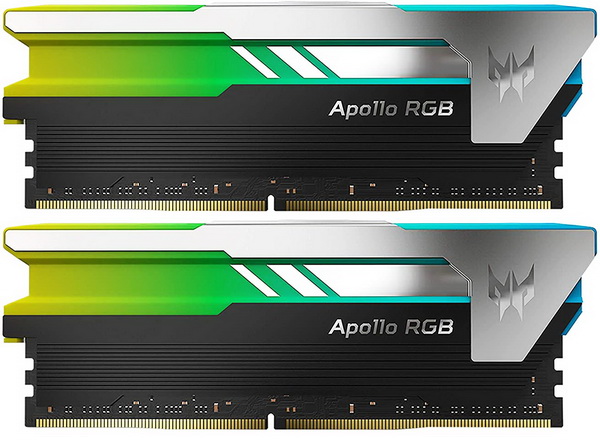
Capacity over performance (speed) or performance over capacity? This has always been up for debate, not just between consumers and professionals but even for the manufacturers themselves. For example, recently i was talking to a company representative who clearly told me they offer only 16GB DDR4 kits because they aimed for higher speeds, something which wasn't possible at higher capacities. Personally, I've always placed capacity over performance but I'd be lying if i said that i don't care about both so what about getting a RAM kit that offers both? The Predator Apollo RGB 32GB 4000MHz CL17 DDR4 RAM kit is the latest "offspring" from the Acer and BIWIN collaboration and as some of you are already aware I've been using it for quite some time now.
Predator branded storage products are designed and manufactured by BIWIN Storage Technology company, a leading maker of quality flash memory, DRAM memory and solid-state drives (SSDs). Delivering premium products for serious gamers and overclocking enthusiasts looking for the ultimate experience, our mission is to provide best-in-class memory modules and solid-state drives that enhance overall system performance and gameplay. Defined by faster speeds and gaming-inspired design, these Predator storage products are built to be the Number One choice for gamers worldwide. Founded in 2010, BIWIN focuses on providing global customers with high-quality storage products and specializes in the research, development, manufacturing and sales of memory chip application products.
In time Acer aims to ship the new Predator Apollo RGB DDR4 kits in dual (2x8/16/32GB) and quad (4x8/16GB) channel configurations with frequencies all the way to 5000MHz (3200/3600/4000/4133/4266/4400/4500/4600/4800/5000MHz), CAS latency timings as low as 14 (3200/3600MHz CL14 - 3200/3600MHZ CL16 - 4000MHZ CL17 - 3600MHZ CL18 - 4133/4266/4400/4500/4600/4800/5000MHZ CL19) and voltages all the way up to 1.5v. Inside the thick aluminum heatspreader we find single and dual rank B-Die memory chips by Samsung, 10-layer PCB with 15mm gold plated contacts and of course a LED bar with a total of 8 ARGB LEDs (8 zones with 10 effects) which is fully compatible with all the popular mainboard sync technologies (including ASUS AURA Sync, GIGABYTE RGB Fusion, MSI Mystic Light Sync and ASRock RGB Sync). As with most high-end kits in the market the entire Predator Apollo RGB line of DDR4 kits by Acer is covered by a limited lifetime warranty.
SPECIFICATIONS AND FEATURES

PACKAGING AND CONTENTS
The kit arrived inside a medium sized box that has a product picture at the front right under the line logo, supported motherboard sync technologies and the included capacity and speed.
Turning the box around we find the features list under a few words about the warranty and next to several certifications.
Removing the top cover reveals the main box with the line logo on it.
Just the instruction manual is bundled with the Predator Apollo RGB RAM.
THE PREDATOR APOLLO RGB 32GB DDR4 4000MHZ CL17
The aluminum heatspreaders used with the Predator Apollo RGB RAM are black and silver in color (the LED bar is made out of plastic).
On a small sticker at the rear of each module you can find the timings, capacity, rank (single/dual) and speed.
The line name is also placed on top of the LED bar.
Here you can see just how great this kit looks when mounted on a system.
The 8 ARGB LEDs are clearly visible from either side.
Acer may not have its own control software but having used this kit on 6 motherboards these days i can verify that it works flawlessly with all the major sync technologies.
Here you can see a few words about the kit from Thaiphoon burner.
TEST BED


TESTING METHODOLOGY
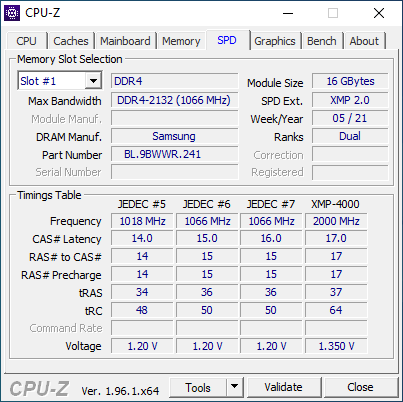
Thanks to XMP (2.0) profiles the only thing one needs to do in order to run this RAM kit at its advertised frequency, timings and voltages is to choose/enable it from within the Bios and reboot. That being said if you're into overclocking you may not wish to use the main XMP profile but instead to choose your very own frequency, timings and voltages to achieve even higher performance numbers and that's exactly what we'll also be doing during our DDR4 tests. To be more specific aside testing each kit with its XMP profile we will also be upping the voltages (up to 1.4V max – even though most kits can function at higher voltages I don’t recommend doing so) and frequencies (200MHZ increments) until i find the maximum achievable stable frequency. I also thought about upping voltages and reducing timings instead of increasing the frequency of the modules as high as it can go (always stable and without going over 1.4V) but the end results are pretty much identical.
As for the how I'll be testing each DDR4 Quad/Dual-Kit to arrive in the lab well there aren't that many benchmark programs that only test RAM (or at least RAM and CPU without anything else coming into play) but I’ve got most of them and so you will be seeing results from following benchmarking programs, AIDA64 Engineer Edition, Cinebench Release 20, MaxMemm2 (because we are getting low performance numbers this doesn't seem to play well with our test rig - probably because of the X299 architecture - but we decided to include it regardless), Passmark Performance Test 9, Sisoftware Sandra Titanium and WPrime v1.55. All tests are performed on a fresh Windows 10 Pro installation (complete with all updates until the day of this review) and are repeated a total of 6 times after which the average numbers get recorded into the charts.
* In addition to Quad-Channel tests since March 2020 I’ll also be using the brand new I9-9900K+Z390 DARK test rig (check above) for Dual-Channel RAM tests.
** Since May 2020 three game benchmarks (Assassin’s Creed Odyssey, GEARS 5 and Metro Exodus tested on the X299 system at 1080p resolution and with the ASUS ROG RTX2060 OC set at Gaming Mode) have also been added in the charts.
*** In September 2021 i replaced the Intel I9-9900K+Z390 DARK test rig for a brand new Intel I9-11900K+Z590 DARK one.
TEST RESULTS - XMP PROFILE / DUAL CHANNEL
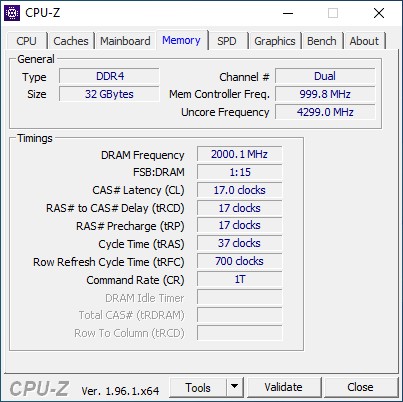






TEST RESULTS - OVERCLOCK / DUAL CHANNEL








CONCLUSION
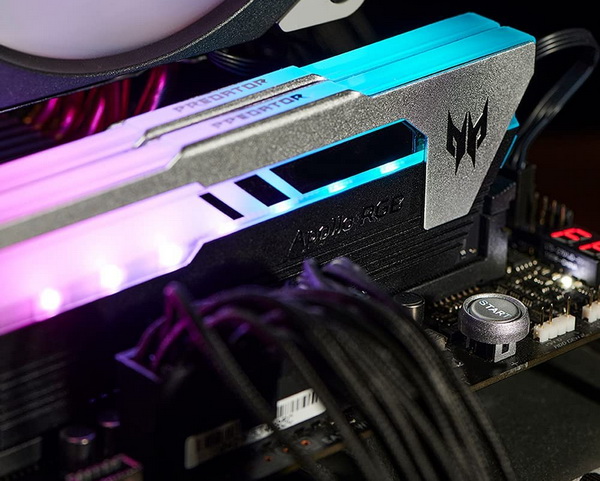
There’s a reason I went from the Core I9-9900K to the Core I9-11900K CPU for my primary test bench and that reason is that both CPUs are 8-core ones based on a dual-channel memory configuration. I also clocked both models at 5GHz and to make things fairer I set the RING of the 11900K to 43 (as opposed to the 47 of the 9900K). Still the CPU is not the only thing at play here, there’s also the Z590 chipset which as you can see at least in the EVGA DARK model sets command rate at 1T instead of 2T when using an XMP 2.0 profile. So, the end result is not what I had expected, yes, some benchmarks are only affected by command rate (thus results are well within what I was hoping for) but others are also affected by the CPU so the charts in this review are to be taken with many grains of salt (this is why I will start new ones with the next RAM review). With that parenthesis out of the way however it’s clear that the Predator Apollo RGB 32GB DDR4 4000MHZ CL17 kit is very fast and allows for very good overclocking, even at just 1.4V (4400MHZ). It’s also a safe bet that if you are willing to climb at 1.45V you should be able to hit 4600MHz with relative ease. Things are equally good when it comes to looks with one of the best RGB lighting heatspreaders I’ve seen to date. Unfortunately, Acer doesn’t offer its very own control software and so people with motherboards like the EVGA Z590 DARK will not be able to control them (which is why in this review I used screenshots from the GIGABYTE X570S Master). This is really not a serious issue for me since even at stock these modules look great but I expect that it may matter for some.
At USD599.99 inside the USA (Amazon.com) and at around 540Euros inside the EU the Predator Apollo RGB 32GB DDR4 4000MHz CL17 is certainly not meant for everyone. Still, there’s certainly a market for such kits (just like with the Royal line by GSkill) and so if you want one of the best kits in the market today you should really check the Predator Apollo RGB line by Acer. At the end of the day the Predator Apollo RGB 32GB DDR4 4000MHz CL17 delivers in performance, overclocking headroom and looks and for that it deserves the Platinum Award.

PROS
- Build Quality (Samsung B-Die / 10 Layer PCB / 15mm Gold Plated Contacts)
- Excellent Performance (Easily Up to 4400MHZ CL17)
- RGB LED Bar (8 ARGB LEDs / 10 Effects)
- Number of Available Kits (Dual / Quad)
- Limited Lifetime Warranty
CONS
- Price (For Some)

 O-Sense
O-Sense





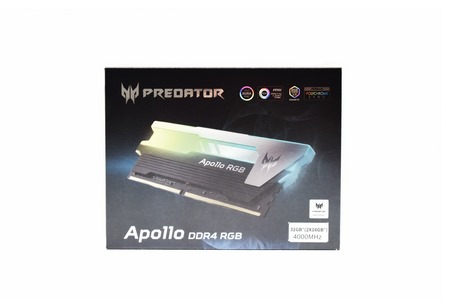
















.png)

